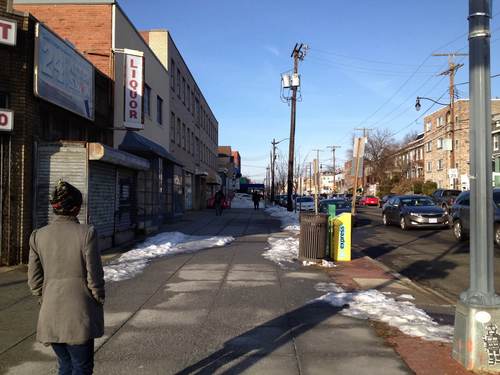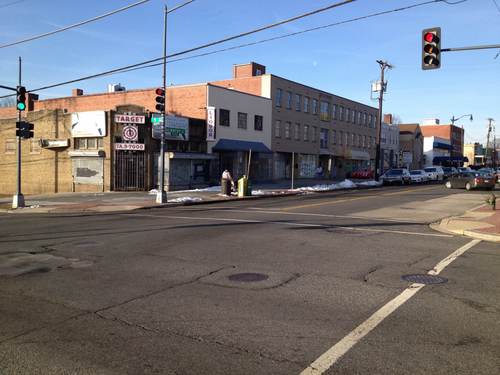Citizens band together to make Kennedy Street NW a retail destination
While new investment and street life arrive in Northwest DC neighborhoods like Petworth, Brightwood, and Takoma, Kennedy Street has been slow to respond. But a group of local citizens seeks to change that.
Shuttered storefronts define Kennedy Street today, despite its population with rising incomes, newly-arrived young families, and relatively low crime. Folks who arrived in the neighborhood ten, five, or one year ago all say they thought the same thing when they first arrived: “Kennedy Street will arrive any time now.” Long-term residents also complain about the lack of services, and are resigned to driving to other neighborhoods for restaurants, groceries, arts and entertainment.
Growing weary of hearing complaints and disappointments, a group of citizens and I started the all-volunteer Kennedy Street Business and Development Association (KSBDA) in January help hasten the evolution.
Geography and the street experience hold Kennedy Street back
Challenges beyond supply and demand explain why Kennedy Street has been slow to change. The street is oriented east-west, against the grain of the city’s main north-south commuter routes, and it is bisected by the imposing four-lane Missouri Avenue, isolating the eastern end of Kennedy Street from the rest of the corridor closer to Georgia Avenue.
The area’s public transport connections are not ideal, as much of the street is just beyond walking distance of the Fort Totten, Takoma, and Petworth metro stations. Except along Georgia Avenue, bus service is limited outside commuter hours.
The street itself creates a difficult environment for thriving retail. Fortuitously, Kennedy Street is zoned C-2-A between Georgia Avenue and North Capitol Street, permitting a mix of housing and commercial uses. But many of the true commercial buildings are clustered around corners with row houses in between, creating gaps in potential retail clusters. In some places, alleys, the sides of houses, wooden fences, and back yards break up the street wall.
Meanwhile, the sidewalks are narrow, with retaining walls and telephone poles creating bottlenecks. Though there are few places to plant, residents and business owners alike lament the street’s general lack of greenery. Some commercial buildings have no alley access at all, requiring business owners to leave waste receptacles on the sidewalk.
Limited support for Kennedy Street
The city’s support for the street appears uncoordinated and uneven. After a model effort in community buy-in, the Office of Planning issued a Revitalization Plan for the street in 2008. The plan is as valid today as it was six years ago. But few of its recommendations have been implemented.
The District Department of Transportation (DDOT) offered $3.75 million in funding for streetscape improvements, but it’s tied up a separate $3.1 million fund to reconfigure the intersection of Kennedy Street with Missouri and Kansas avenues, both of which are behind schedule. Quick fixes like new parking lines, street furniture, and bike racks have been generally unrealized. City programs to improve building facades and invest in businesses have barely touched Kennedy Street.
Oddly, the eastern portion is not eligible for several city incentives, though the commercial buildings there are in worse shape. Pepco has refused requests to bury or even reduce the number of overhead wires, citing the cost and reliability of the existing infrastructure.
Businesses are determined to make it work
Still, some current businesses are determined to grow with the neighborhood. Culture Coffee, a community-oriented cafe at 7th and Kennedy streets NW, has fast become the neighborhood’s third space. A block away, a new outpost of Taqueria DF will add patio seating for tacos and cervezas this summer. Local take-out favorite Andrene’s, at 3rd and Kennedy, has pledged to remove its plexiglass windows and open up to the street.
KSBDA has found some businesses who seek locations here, but would need to buy and invest in a space. Most owners are only looking to lease, but don’t have the capital to install commercial kitchens, quality floors or new facades. Some owners are speculating on appreciation, but their marginal tenants or unavailable vacant storefronts hold the street back.
More than a few prime commercial locations are shuddered and their status is entirely unclear: are they operating irregularly, defunct, or hiding from city regulators? Other owners are absent, often elderly, and have little faith that the street could ever change. Two owners have even tried to talk me out of starting a business on the street!
So how do we overcome these challenges to help Kennedy Street fulfill the potential that residents and businesses all see? How can a movement of volunteer residents and true mom-and-pop businesses help the street become a walkable, welcoming destination, without turning to major outside developers with no attachment to how we define our neighborhood?
Many of us are ready to take action to help grow the street from the bottom up, but we need your help, your lessons, your advice, and your resources to get it done.



